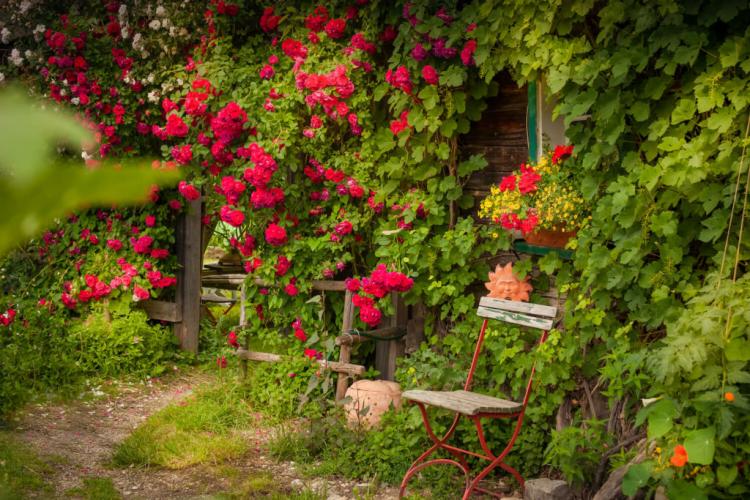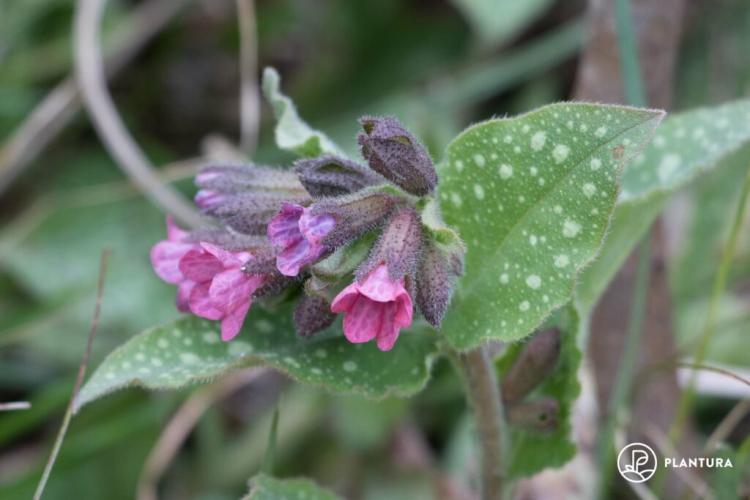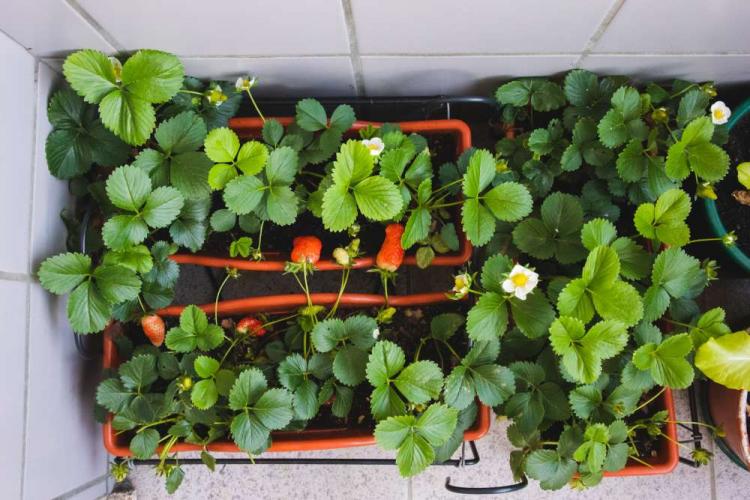Repotting indoor plants: when, how & which soil is suitable?
Indoor plants bring nature into our homes and with the right care you can enjoy them for a long time. Among other things, it is important to repot the indoor plants regularly.
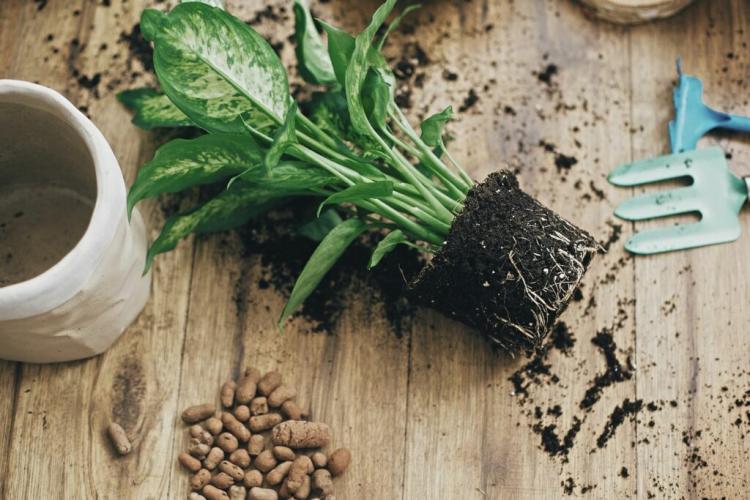
Plants should be repotted occasionally so that growth does not stop [Photo: Bogdan Sonjachnyj / Shutterstock.com]
Repotting indoor plants is not that difficult. If you follow a few important tips, the green favorites will sprout again quickly and growth will be stimulated. Here we show you how to repot and when it is time to change the pot.
When should you repot indoor plants?
Table of Contents
The best time to repot is in spring between February and April. Then the growing season begins and your indoor plants can immediately grow and sprout in the new substrate. In special cases, for example with a pest infestation, it can also be repotted at a different time of the year.
Key signs that it is time to repot:
- When the roots of the plant are already rising out of the pot or growing out of the drainage hole at the bottom.
- When white limescale and salt deposits bloom on the substrate surface.
- When the earth collapses and irrigation water simply rolls off the root ball, making it difficult to wet.
- When plant growth is inhibited or deficiency symptoms occur.
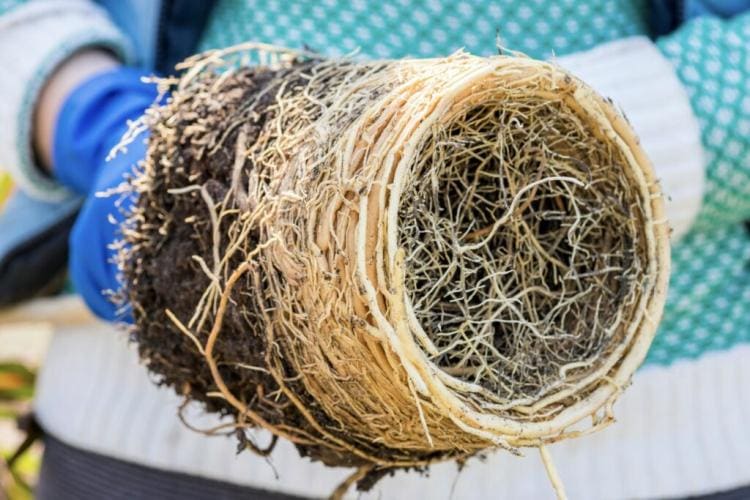
It's high time for a bigger pot here [Photo: Andrii Spy_k / Shutterstock.com]
- If there is a pest infestation – especially pests in the substrate such as sciarid gnats, but also pests such as springtails, which can multiply uncontrollably.
- Newly purchased plants should always be repotted as soon as possible, as they are often sold in pots that are too small and soil that can only be kept for a short time.
- When the plant has formed many offshoots that can develop better with a little space and should therefore be separated.
Tip : Caution is required, especially with plants that are sensitive to interference, such as citrus plants or the violin fig. Since these plants react stressed to repotting, they should only be repotted rarely. Even slow-growing plants such as cacti and other succulents rarely need a new pot.
Which soil is suitable for repotting indoor plants?
If you are wondering which soil is suitable when repotting indoor plants, that depends above all on the plant itself. We give you a brief overview of which substrate is suitable for which group of plants:
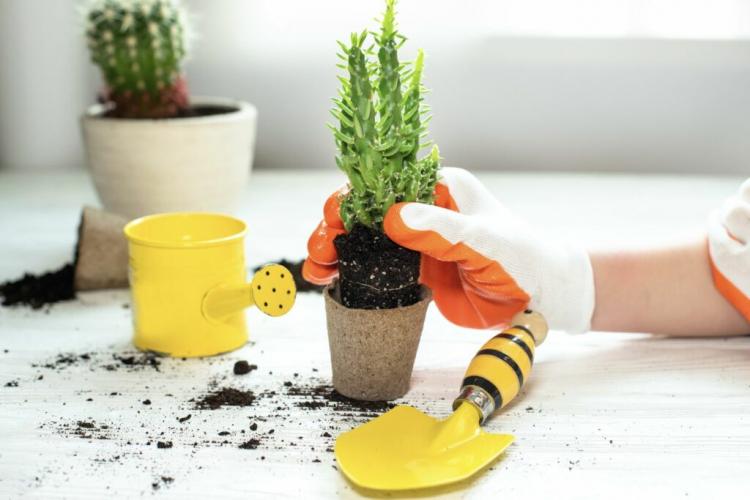
Gloves are recommended for poisonous or prickly plants [Photo: Lipatova Maryna / Shutterstock.com]
Universal earth:
A universal soil can be used for all indoor plants that do not have any special requirements on their substrate. Universal soil is suitable, for example, for elephant ear, lychee tree, heart leaf flower, flamingo flower and window leaf, single leaf, porcelain flower, basket maranthe or climbing philodendron.
A high quality and environmentally friendly soil for your plants is, for example, our Plantura organic universal soil. Its pH value in the range from 6.1 to 6.9 is suitable for many indoor plants. It naturally contains all the important nutrients that plants need for a good start to growth.
Tip: Universal soil also usually forms the basis for substrate mixtures that you can produce for indoor plants with more specific requirements, such as cactus soil.
Potting soil: Potting soil is usually suitable for flowering plants such as cyclamen, hyacinth, the crown of glory, the blood flower, cylinder cleaner, pelargonium or hibiscus. So if you have house plants that develop a special bloom and not only shine with green leaf decorations, it is best to use potting soil. Here, too, high-quality substrates, such as our Plantura organic potting soil, are recommended. Potting soil usually contains a little more phosphate than universal soil and thus particularly encourages the plants to flower.
Succulent and cactus soil: Succulents and cacti such as aloe vera or haworthia need a substrate that is well drained and permeable so that they do not become wet. You can easily mix such a substrate yourself. The basis for this is universal soil, which should make up half of the mixture. There is also about 20% quartz sand. The rest is a mixture of pumice and expanded clay. This mixture is also ideal for cacti.
Palm soil: Palms such as golden fruit palm or kentia palm also need a slightly more permeable substrate. Of course there are many different types of palm from different regions, which in turn have their own requirements. Basically, however, about a third of quartz sand should be added to the universal soil for better permeability. Because palms also love a slightly lower pH level, it is advisable to add some acidic soil.
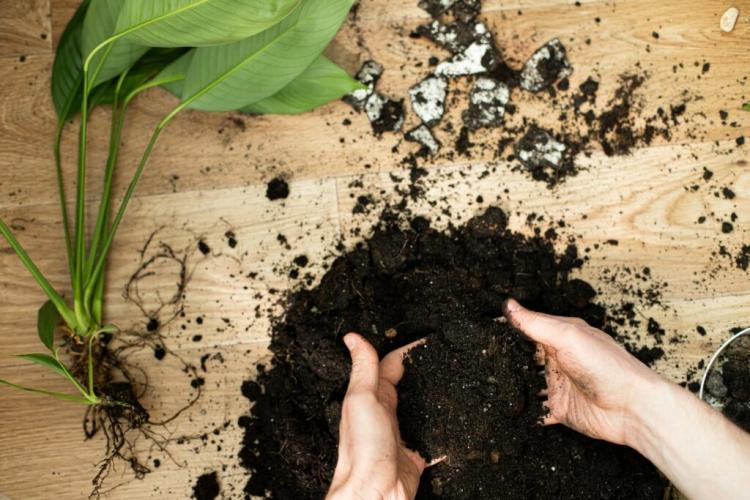
The fresh substrate should be of high quality and adapted to the needs of the plant [Photo: Kateryna Slavska / Shutterstock.com]
Herbal soil: For Mediterranean kitchen herbs on the balcony and window sill, it is best to use special herb soil. Rosemary, thyme, lavender, savory and marjoram regret draining, nutrient-poor soils and taste more aromatic when grown in them. A sustainable soil for your Mediterranean kitchen herbs is, for example, our Plantura organic herb & seed soil, which does not require peat and is therefore produced with a reduced CO2 emissions.
Tip: Basil, parsley, chives, dill, mint, lovage and wild garlic need a nutrient-rich substrate – you will find what you need for healthy growth in a rich universal soil. Some plants, such as orchids or carnivores, need a very special substrate that is not so easy to mix yourself. The best thing to do here is to use a special soil that is precisely tailored to the needs of these groups of plants. In our articles you can find out about the substrate requirements of various indoor plants.
How big should the new pot be?
If there is still space between the root ball and the old pot, but there are other reasons for repotting, a larger pot is not necessary, just fresh substrate. Once the root of the pot is complete, the new pot should be a maximum of three sizes larger than the old one. Ideally, there is about 3 cm of space between the root ball and the edge of the new pot.
Repotting bonsai is a special case as it should often remain small. After a root cut, they are then simply planted in their old pot or in a container that is only slightly larger.
Tip: If the new pot is too big, the plant has less support and there is a lot of moist substrate around the roots, so that root rot can occur more easily.
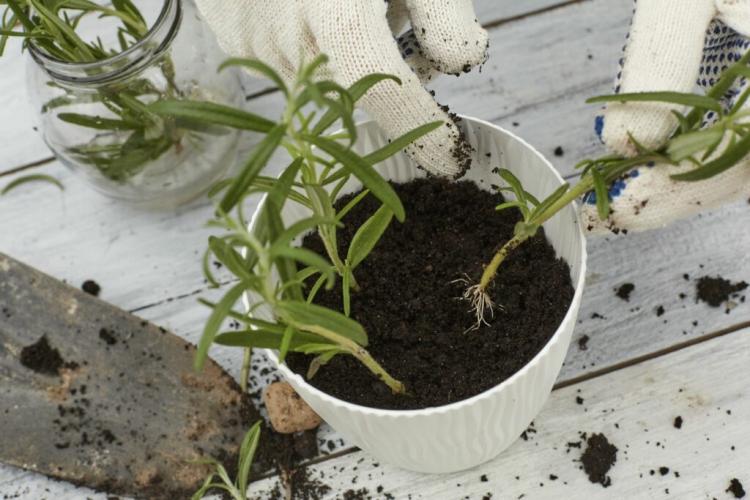
Repotting can also be used to propagate the plant [Photo: Nadiia Iatsun / Shutterstock.com]
Instructions: Repot indoor plants properly
How to properly repot your houseplants, we have summarized here once again in a short step-by-step guide:
- If it is a poisonous or prickly houseplant, be sure to put on gloves before repotting. To repot large houseplant, you can carefully lay the plant on its side. Then repotting is easier.
- First, check to see if the plant needs a larger pot. To do this, carefully lift the plant out of the container and assess the root ball.
- Prepare the new pot by placing a layer of potsherds, pebbles, or expanded clay on the bottom of the pot. This way the water can drain off better.
Tip : If you place a fleece between the substrate and the drainage layer, everything remains neatly separated and you can reuse the drainage material. - Put a layer of substrate in the pot. At this point, a granular fertilizer can also be mixed in, which provides the plant with long-term nutrients.
- Lift the plant out of its container and remove the old soil from the root ball as best you can. You can also gently loosen the roots with your fingers and trim off rotten roots. If the drainage hole is so deeply rooted that the plant can no longer be loosened, it is best to cut the pot open with scissors.
- Now put the plant in the new pot and fill the edges with soil. Leave about 3 cm of space up to the edge of the pot so that the pot does not overflow when watering.
- Now you can carefully tap the pot on the table a few times so that the soil is distributed in the spaces between. Then press the substrate lightly.
- Finally, you should water the soil so that the substrate is nice and moist.
- Cover the substrate surface with a layer of mulch to prevent mold from forming on the soil and to prevent fungus gnat infestation.

How to properly repot indoor plants [Photo: Olya Haifisch / Shutterstock.com]
Tip: Some plants can also be divided when repotting: To do this, carefully separate the plant at the root ball and then plant the two parts in two separate pots.
Care after repotting
You should note the following after repotting: If you removed part of the roots during repotting due to pest infestation or root rot, the above-ground parts of the plant should also be cut back slightly. Otherwise it can happen that the roots cannot provide enough water for the plants.
After repotting, it is best not to place the plant in direct sunlight to avoid drought stress.
The fresh soil provides the houseplant with the necessary nutrients after repotting. Therefore, in the first two months it is only necessary to water regularly so that the root ball does not dry out. About eight months after repotting, you can put some fertilizer back into the substrate. The nutrient requirements differ depending on the plant group:
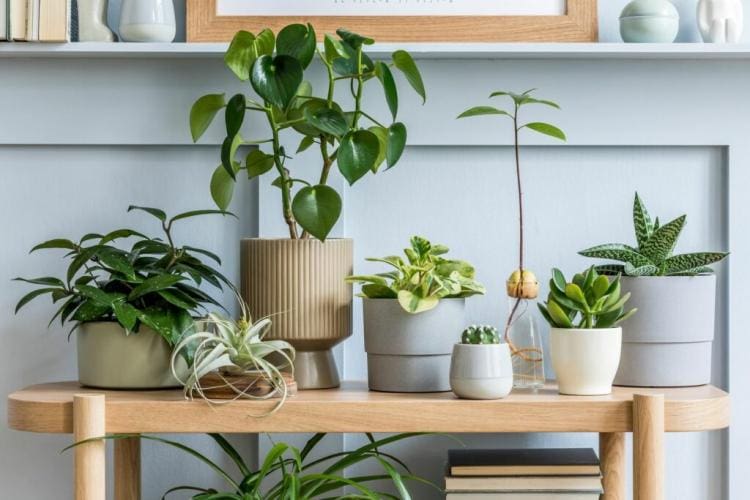
Each plant has its own requirements when it comes to fertilizer application [Photo: Followtheflow / Shutterstock.com]
Green plant fertilizer: Plants that stand out mainly because of their foliage need green plant fertilizer that strengthens the leaves and roots. Our Plantura organic indoor & green plant fertilizer, for example, meets these requirements. In addition to the important nutritional elements nitrogen and potassium, the microorganisms they contain also support the growth of your plant. This fertilizer is suitable for example for the Monstera or Anthuriums.
Flowering plant fertilizer: Plants that develop flowers, such as geraniums and amaryllis, require a different nutrient composition than green plants. Our Plantura organic flower & balcony plant fertilizer is particularly suitable for flowers and is 100% organic. And that benefits both your plants and the environment.
Mediteranean fertilizer : Mediterranean plants or citrus plants need a different combination of nutrients and often a lot of potassium and iron to develop their fruits. In special Mediterranean fertilizers, such as our Plantura organic citrus & Mediterranean fertilizers, these nutritional elements are contained in sufficient quantities. Our fertilizer also contains microorganisms that support vigorous root growth and stimulate it over the long term. It is suitable for all citrus plants, for example lemon trees, but also olive trees.

After repotting, the plants cannot withstand full sun at first [Photo: pundapanda / Shutterstock.com]
How often and how much you need to fertilize depends entirely on the plant. In our special article, we give you some helpful tips on how to fertilize indoor plants and what to watch out for.


